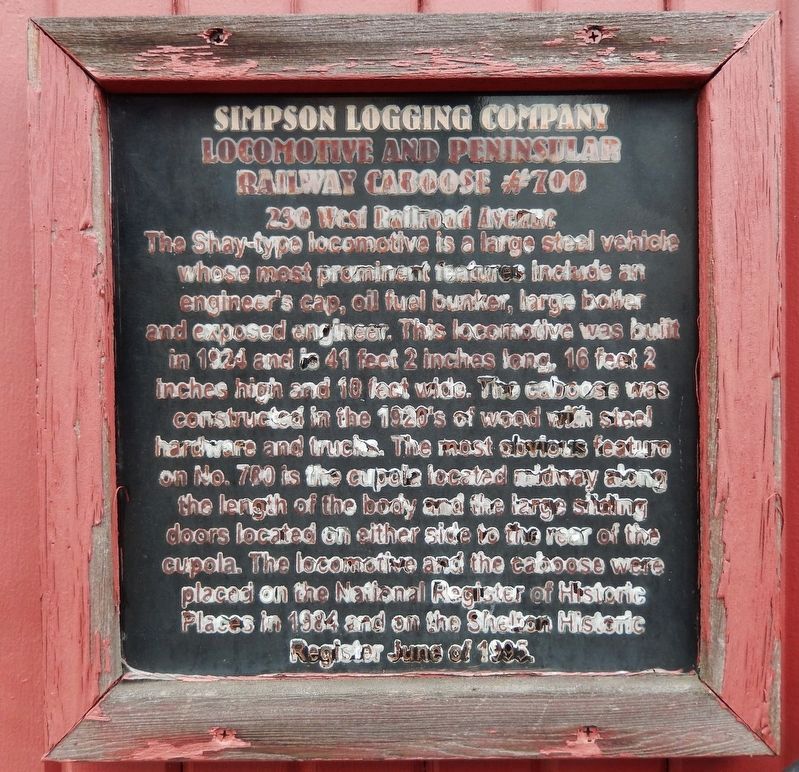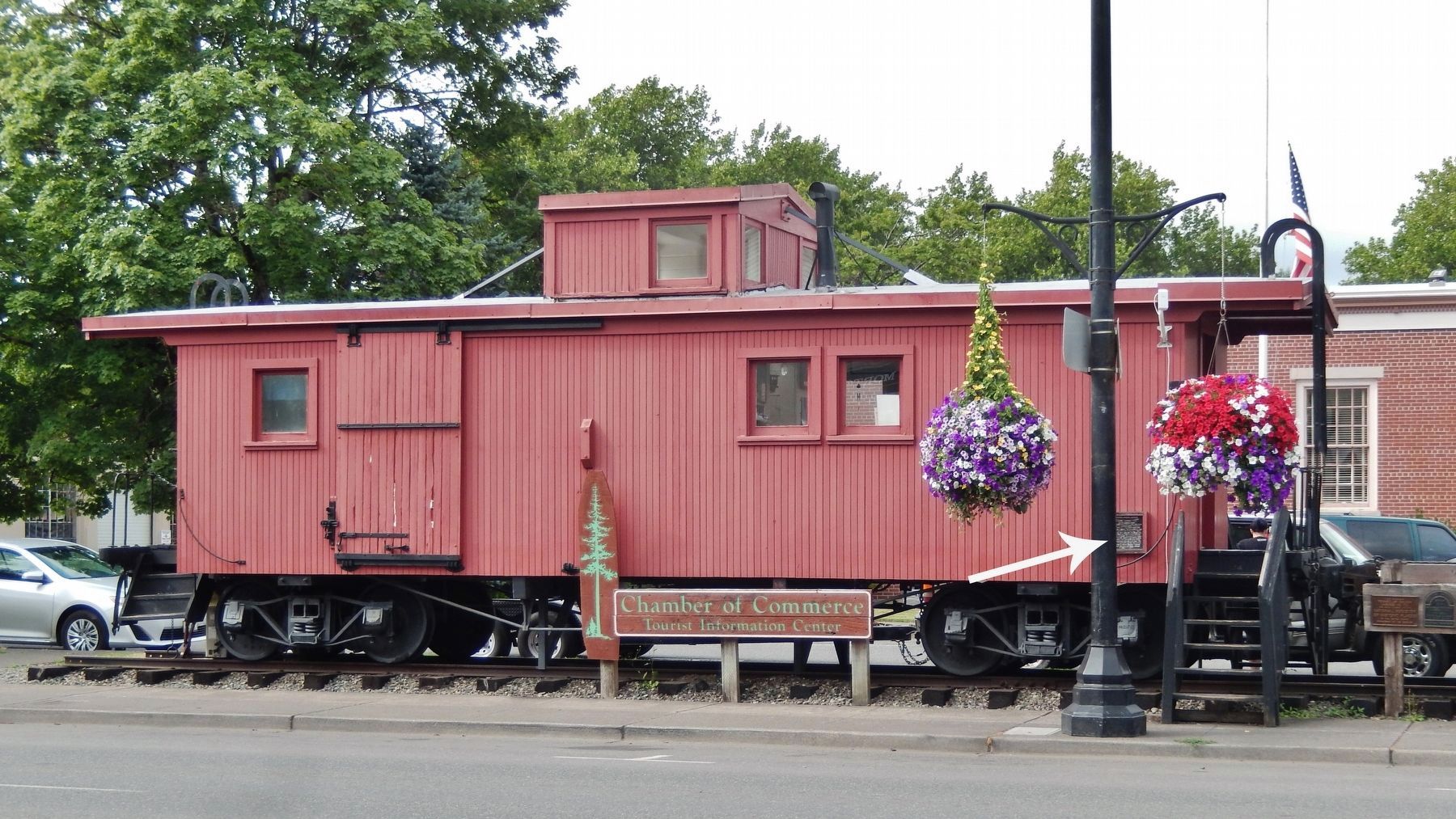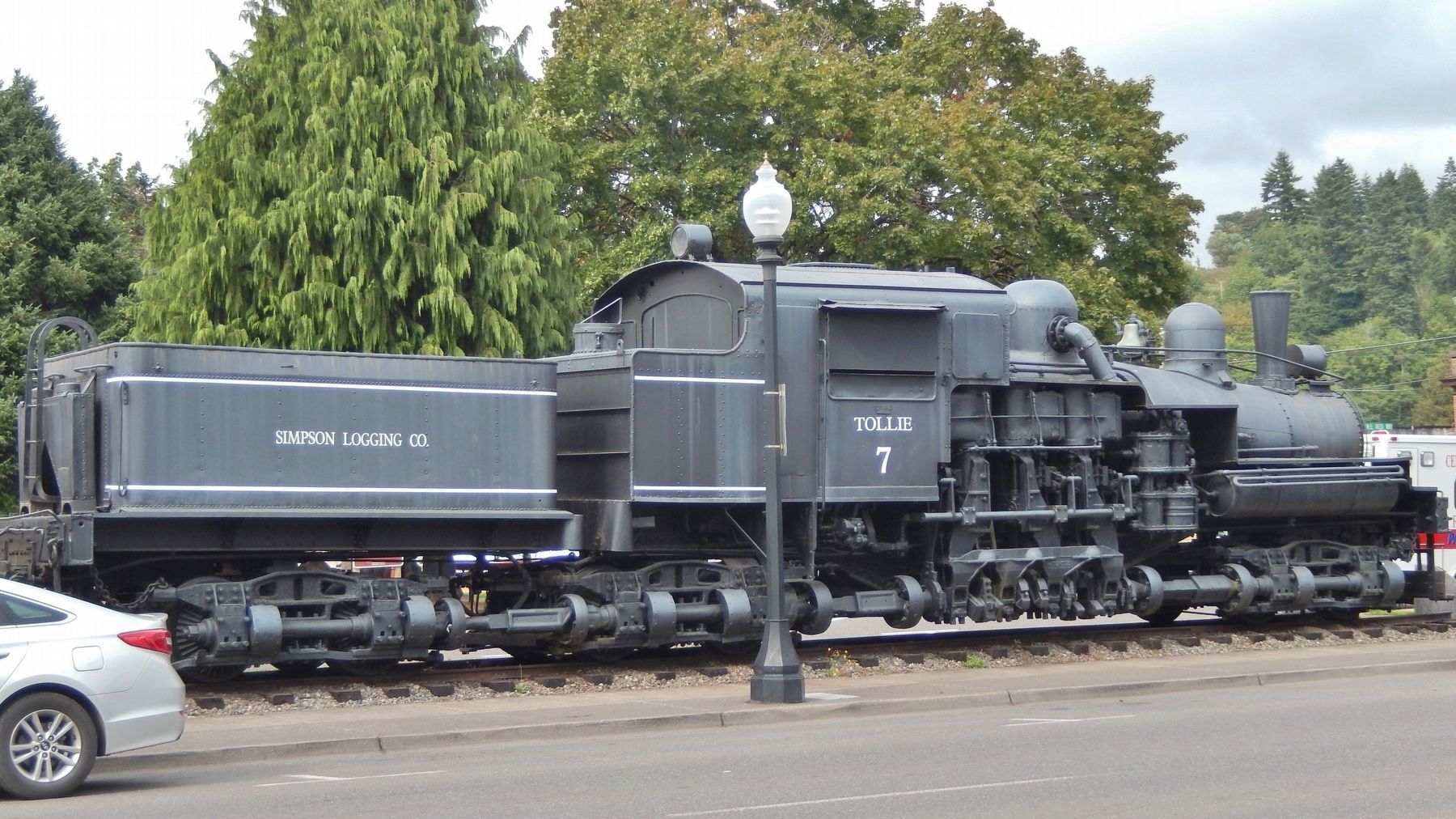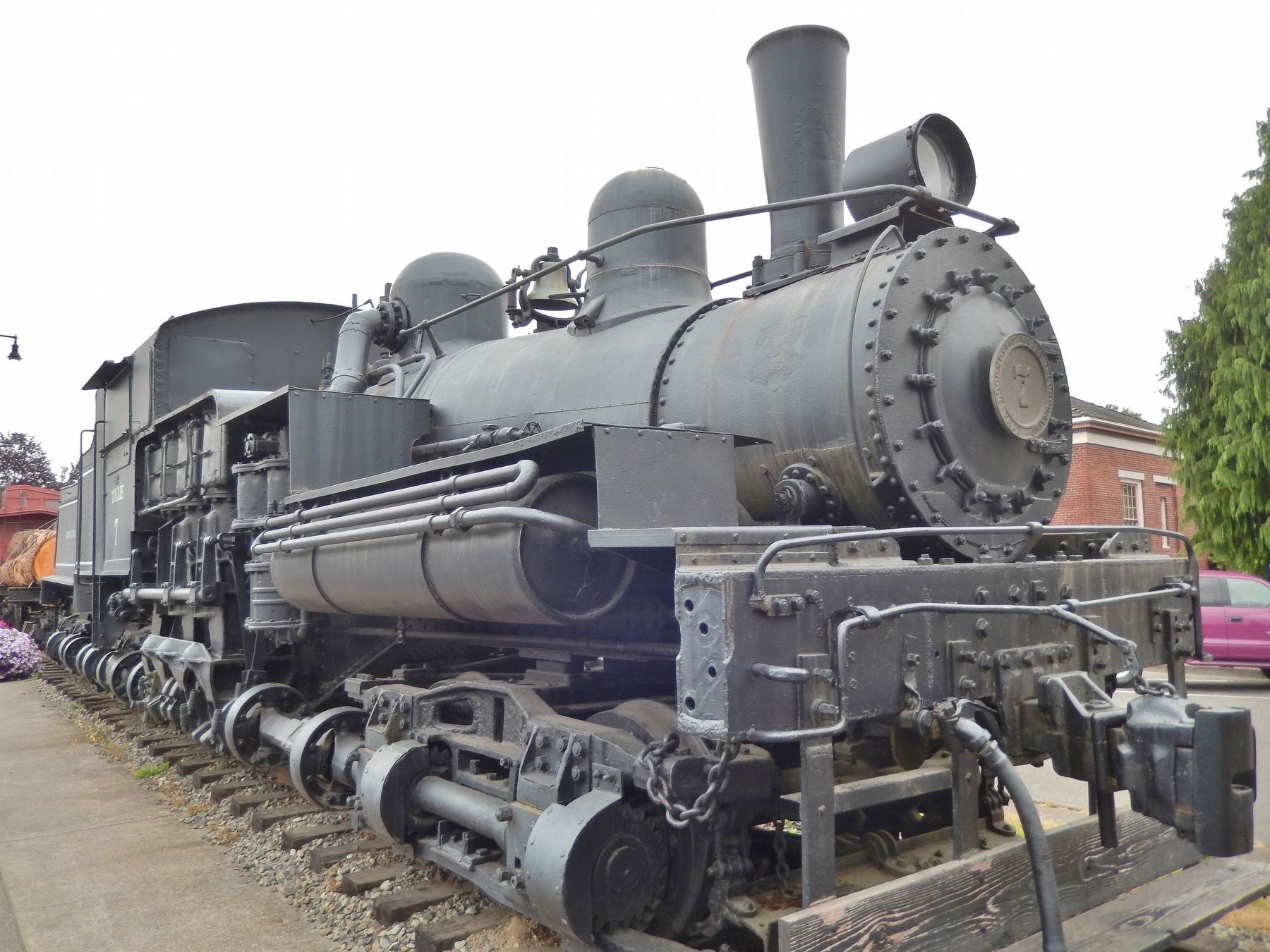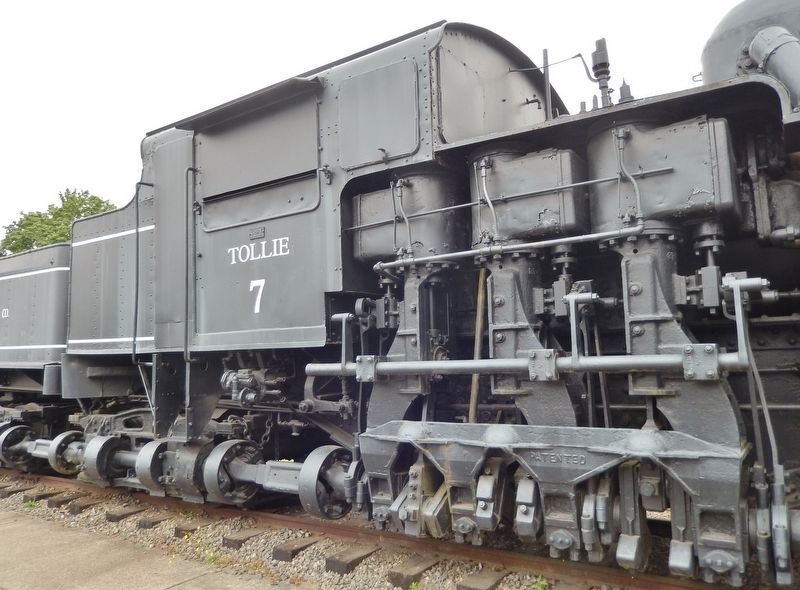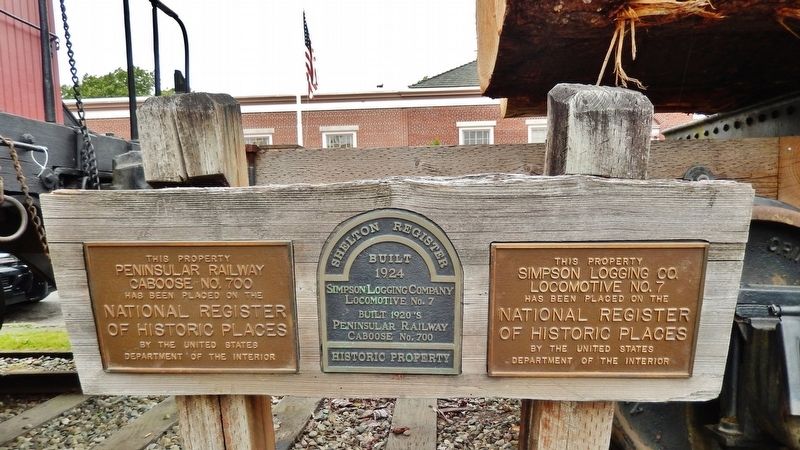Shelton in Mason County, Washington — The American West (Northwest)
Simpson Logging Company
Locomotive #7 and Peninsular Railway Caboose #700
— 230 West Railroad Avenue —
The Shay-type locomotive is a large steel vehicle whose most prominent features include an engineer’s cap, oil fuel bunker, large boiler and exposed engineer. This locomotive was built in 1924 and is 41 feet 2 inches long, 16 feet 2 inches high and 10 feet wide.
The caboose was constructed in the 1920’s of wood with steel hardware and trucks. The most obvious feature on No. 700 is the cupola located midway along the length of the body and the large sliding doors located on either side to the rear of the cupola. The locomotive and the caboose were placed on the National Register of Historic Places in 1984 and on the Shelton Historic Register June of 1995.
Topics. This historical marker is listed in these topic lists: Horticulture & Forestry • Industry & Commerce • Railroads & Streetcars. A significant historical year for this entry is 1924.
Location. 47° 12.782′ N, 123° 6.123′ W. Marker is in Shelton, Washington, in Mason County. Marker is on West Railroad Avenue east of South 3rd Street, on the left when traveling east. Marker is a painted wooden plaque, mounted at eye-level, directly on the subject caboose. Touch for map. Marker is at or near this postal address: 230 West Railroad Avenue, Shelton WA 98584, United States of America. Touch for directions.
Other nearby markers. At least 8 other markers are within 16 miles of this marker, measured as the crow flies. Site of David Shelton First Cabin 1854 (about 400 feet away, measured in a direct line); Shelton Public Library and Town Hall (about 700 feet away); Goldsborough Creek Bridge (approx. ¼ mile away); Dofflemyer Point Lighthouse - Boston Harbor - Washington State (approx. 10½ miles away); Old City Hall and Fire Station (approx. 14.9 miles away); Marking the End of the Oregon Trail 1844 (approx. 15.1 miles away); John Rankin Rogers (approx. 15.1 miles away); Marathon Park (approx. 15.1 miles away). Touch for a list and map of all markers in Shelton.
More about this marker. Marker is significantly weathered and somewhat difficult to read.
Regarding Simpson Logging Company. National Register of Historic Places (1984). The Peninsular Railway Caboose #700 is now housing the Shelton Chamber of Commerce.
Also see . . .
1. Simpson Logging Company Railroad History.
The Simpson Company built and operates a logging railroad known as the Simpson Railroad. It is one of the last logging railroad operations in the continental United States and dates back 120 years. The railroad was once extensive and branched
out into several hundred miles of forestland in the Olympic Peninsula but is now limited to ten miles of operational track. The rail line was to transport lumber and as a transportation network to remote logging camps and towns. (Submitted on April 26, 2018, by Cosmos Mariner of Cape Canaveral, Florida.)
2. Shay locomotive.
Shay locomotives had regular fire-tube boilers offset to the left to provide space for, and counterbalance the weight of, a two or three cylinder "motor," mounted vertically on the right with longitudinal drive shafts extending fore and aft from the crankshaft at wheel axle height. These shafts had universal joints and square sliding prismatic joints to accommodate the swiveling trucks. Each axle was driven by a separate bevel gear, with no side rods. The strength of these engines is that all wheels, including, in some engines, those under the tender, are driven so that all the weight develops tractive effort. A high ratio of piston strokes to wheel revolutions allowed them to run at partial slip, where a conventional rod engine would spin its drive wheels and burn rails, losing all traction. Shay locomotives were often known as sidewinders or stemwinders for their side-mounted drive shafts. (Submitted on April 26, 2018, by Cosmos Mariner of Cape Canaveral, Florida.)
Credits. This page was last revised on April 26, 2018. It was originally submitted on April 26, 2018, by Cosmos Mariner of Cape Canaveral, Florida. This page has been viewed 591 times since then and 65 times this year. Photos: 1, 2, 3, 4, 5, 6. submitted on April 26, 2018, by Cosmos Mariner of Cape Canaveral, Florida. • Andrew Ruppenstein was the editor who published this page.
